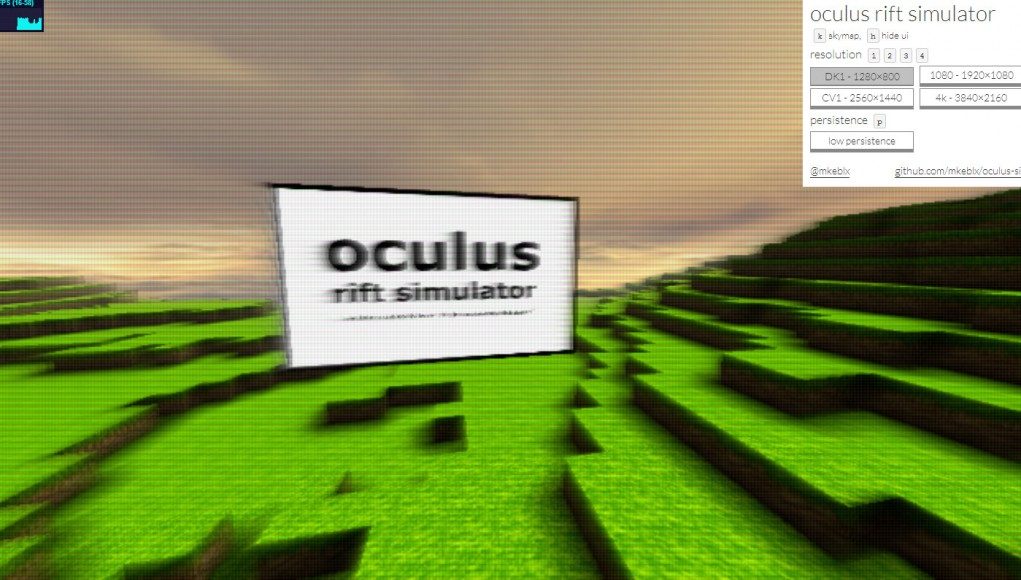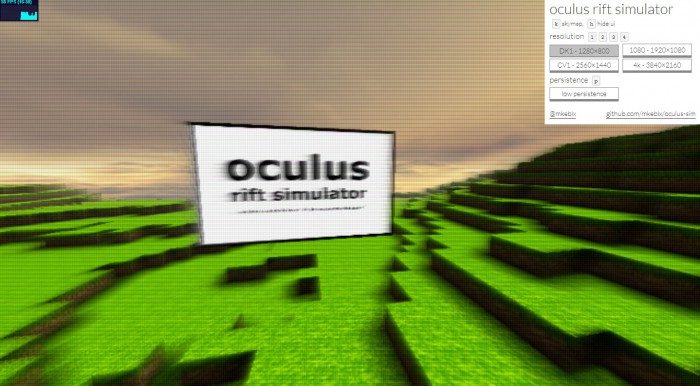Developer Michael Blix has created an Oculus Rift Simulator web app which gives an idea of what an Oculus Rift could look like equipped with a 1080p, 2k, and 4k screen. The demo also features simulated ‘low-persistence’ which helps users see how the new tech improves the virtual reality experience.
Road to VR’s editors are fortunate enough to have tried the Oculus Rift Crystal Cove prototype which features a 1080p display and ‘low-persistence’ technology that greatly reduces smearing during head rotation. Those who haven’t been able to go head-in with the Crystal Cove prototype will appreciate the Oculus Rift Simulator from Michael Blix.
ORS is a small web app which demonstrates the impact that varying resolution and low-persistence technology have on the virtual reality experience. The simulator offers a low-persistence toggle as well as simulated resolution options of 1280×800 (the current DK1 resolution), 1920×1080 (the HD prototype and Crystal Cove resolution) as well as 2k (2560×1440) and 4k (3840×2160) resolutions which might be supported by future versions of the Oculus Rift.
ORS will be most useful to those that have tried at least the Oculus Rift DK1, providing a useful point of comparison for the higher resolutions and smearing (or lack thereof).
The scene used in ORS—a small faux-Minecraft environment—is well chosen; the sharp edges of the cubes make edge aliasing easy to identify and compare when switching between various resolutions.
Blix, 28 years old and practiced in computer science and engineering, tells me that he built ORS on Javascript and three.js, a library on top of raw WebGL.
As someone who has used the Oculus Rift Dev Kit (DK1) extensively, and has also been able to try the Rift HD prototype and Crystal Cove prototype, I have to say that Blix has done a fine job at simulating the impact of different resolutions and the low-persistence technology—the latter of which makes a huge impact on visual quality by reducing scene smearing during head movement, even on the DK1’s 1280×800 display.
See Also: Oculus VR Interview – Low Persistence ‘Fundamentally Changes the Oculus Rift Experience’
Blix has made ORS open-source through GitHub. He also teases some experience with optical tracking which he intends to use for his next Oculus Rift project… stay tuned.
After using ORS all I know is that a 4k Rift can’t come soon enough!
Thanks to Joona for the tip!








